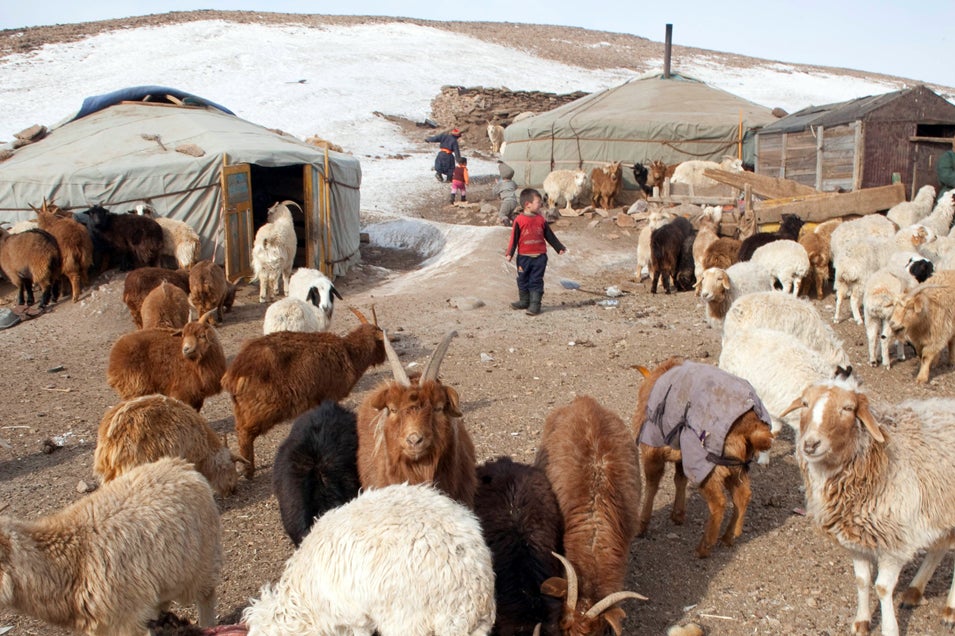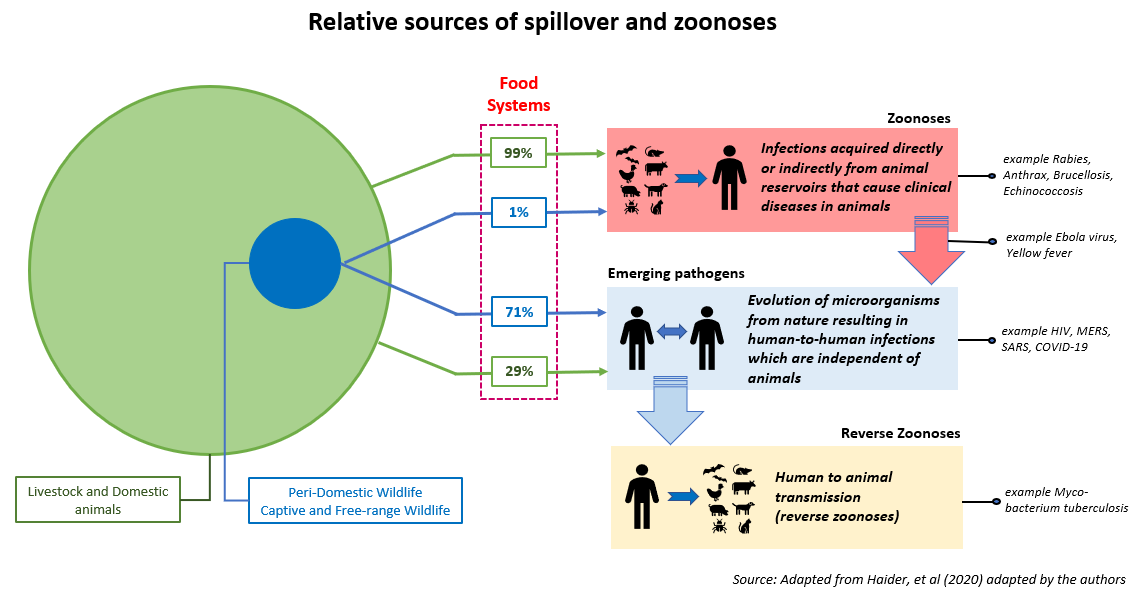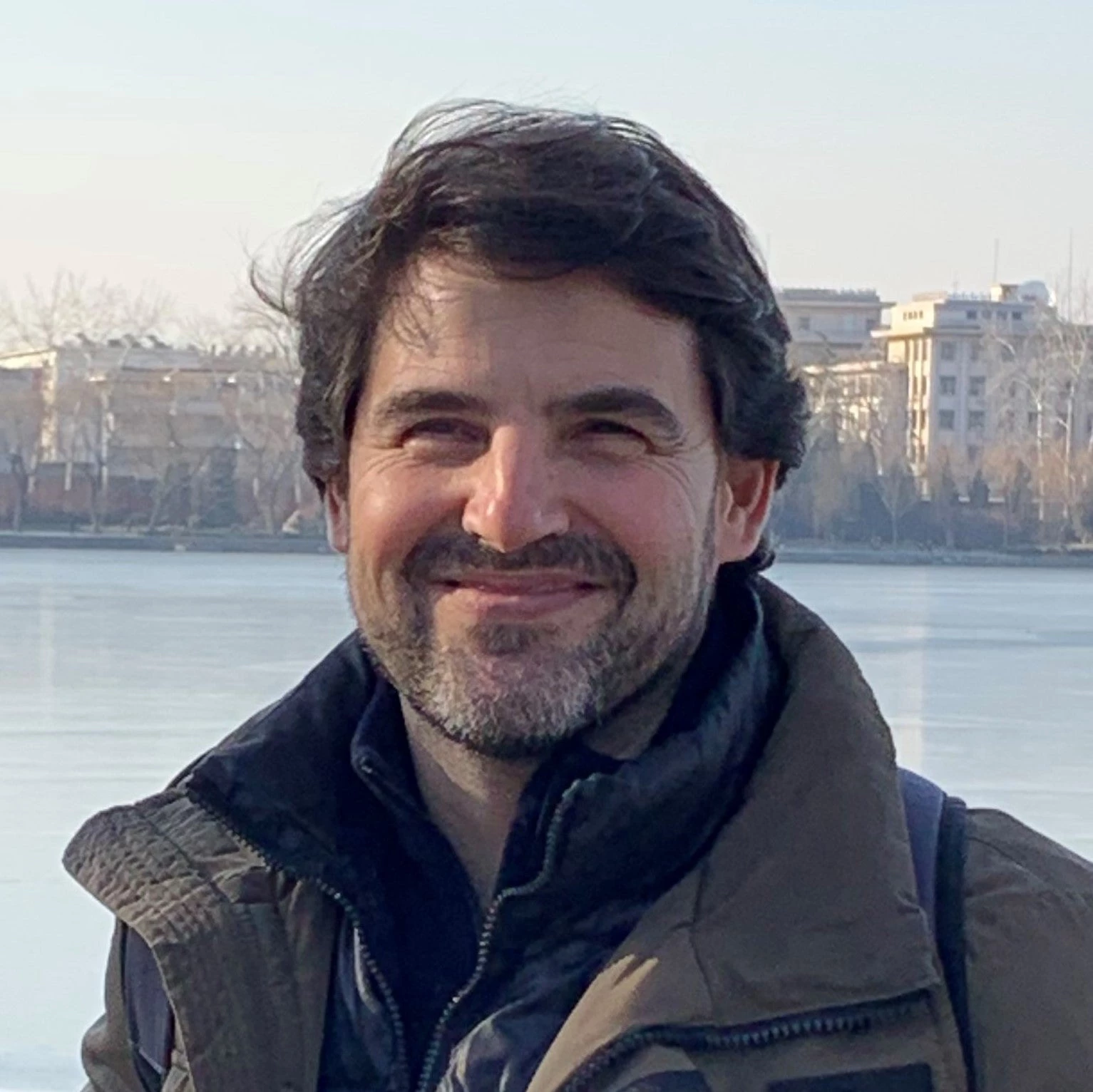 Photo: Chien Min Chung/World Bank
Photo: Chien Min Chung/World Bank
The huge cost of the COVID-19 pandemic has focused minds around the world on what it will take to prevent the next pandemic from happening , or drastically reduce the risk of such occurrence. One key solution being discussed is the adoption of the “One Health” approach, which recognizes that human health is intertwined with the health of the ecosystem and animals, both wild and domesticated.
Predicting where diseases may emerge is a complex and inexact science. However, it is well-known that most human infectious diseases have animal origins, that most emerging infectious diseases are tied to wildlife, and that such diseases have increased over recent decades as a result of our interactions with animals and changes to our natural environment. In fact, approximately 70 percent of emerging infectious diseases have origins in wildlife . Agriculture and livestock drivers alone were associated with more than half of all zoonoses that have emerged in humans. Nearly three-quarters of all antimicrobials worldwide are used in livestock production and aquaculture. Reducing the frequency of close contact between wild and domesticated animals, and between animals and humans, and managing the associated risks will play a key role in preventing the emergence, incursion, and spread of infectious diseases with pandemic potential.
Research points to East Asia and the Pacific (EAP) as global hotspots for pandemic emergence. EAP has seen the highest economic losses from epidemics of any region in the world and the total cost of previous epidemics was estimated at US$ 200 billion per year or 0.9 percent of the region’s GDP. Recent diseases such as SARS, H5N1, H7N9, and Nipah all came from the region, which is especially high-risk for a number of reasons.
East Asia and Southeast Asia have large and densely concentrated human settlements, high livestock populations, and abundant wildlife. Rapid urbanization and agricultural expansion are leading to encroachment into wilderness areas, increasing the likelihood of pathogen spillover between humans and wild animals. These factors along with climate change are increasing the possibility of transmission of both zoonotic and vector-borne diseases. Consequently, many EAP countries are at a high risk of zoonotic outbreaks. Increasing domestic and wildlife trade in the region, deforestation and ecosystem degradation, together with inadequate livestock biosecurity and food hygiene practices, represent additional risk factors.
Two new reports from the World Bank and FAO – From Reacting to Preventing Pandemics: Building Animal Health and Wildlife Systems in East Asia and Pacific and Reducing pandemic risks at source: Wildlife, Environment and One Health Foundations in East and South Asia – demonstrate that governments in East Asia and the Pacific can take practical actions right now to minimize these risks, particularly by improving the coordination between the human health, animal health, and environmental health sectors.
Currently, critical data such as disease surveillance information, monitoring of wild and domestic animal movements and trade volume, or pathogen identification, are not routinely being shared between these sectors, and animal health and environmental health are neglected in terms of policy attention and investments and hence remain the weakest links in One Health. Few countries in the region have dedicated institutional mandates for wildlife health surveillance and emerging disease prevention. Integration is lacking between national and sub-national systems for disease prevention, detection, and response across all three sectors. Regional coordination for One Health is limited, as no single entity covers the whole region.
In many countries of EAP, unsanitary conditions in animal production facilities and traditional food markets raise the risk of disease transmission. Live animals and animal products are traded over long distances by multiple actors in complex value chains, making it hard to trace the origins and spread of disease. The sale of wildlife for food – such as rats, deer, foxes, bears, porcupines, civets, wild boar, waterfowl and bats – has developed into a significant industry with limited supervision by authorities.
World Bank economic analysis shows that investments in One Health approaches make economic sense. However, aligning incentives is a challenge. The benefits of preventing globally significant public health events (pandemics) accrue at the national and global level, while the costs involved in reducing risk (through reducing deforestation, conserving biodiversity, monitoring wildlife trade, early detection and control, reducing spillovers, enhancing biosecurity of livestock farms, increasing surveillance of slaughterhouses and traditional markets) are mainly borne locally. Investing in One Health approaches should therefore be viewed as a global public good that also contributes to local health security priorities.
This gap in funding for One Health systems regionally and globally should be tackled at different levels. First, the international community ought to fund the necessary strategies to reduce pandemic risks by investing in regional disease surveillance and control programs for emerging infectious diseases, transboundary animal diseases and wildlife health programs, information networking and promoting safety standards, and trade protocols and inspection procedures for ‘fail-safe systems’. Second, more local funds – both public and private – should be mobilized for reducing and better managing interactions between humans, animals, and our environment that is most likely to lead to spillovers, joint surveillance systems, healthier environments, and agri-food systems.
Examples of actions that address both pandemic risks and food safety include improved animal production practices, ensuring the traceability of animal products, better monitoring of antimicrobial use, and enabling early detection of disease outbreaks in animals with rapid scientific investigation and response.
Political and technical leadership will be critical – for example, to establish clear mandates with well-defined roles and responsibilities for different ministries, such as agriculture, environment, health, transport, and commerce, and agile mechanisms to coordinate prevention and response actions.
The One Health approach involves practices such as considering wildlife disease risks in land use planning; integrating disease impact projections into cost-benefit calculations for potential development projects in areas such as urbanization, mining, logging, agricultural expansion, and tourism; and addressing public health threats in national biodiversity strategies.
There is scope for fresh thinking about how to optimize technologies, with appropriate training, to involve park rangers, hunters, communities, and natural resource practitioners in providing important data for disease surveillance systems. For example, nearly 3 million farmers and 11,000 field veterinarians are now using mobile phones to capture data on the health of animals and animal traffic linking up with laboratory and disease reports and slaughterhouse surveillance under Indonesia’s integrated animal health information system (iSIKHNAS).
The reports highlight other success stories to show what is possible. By emphasizing a commitment to improving food safety, Ho Chi Minh City in Vietnam has rallied public support for ending the sale of live animals in traditional markets. In Guangdong, China, provincial authorities worked with the private owners of a live bird market on improving drainage and cleaning processes for trucks, cages, and equipment.
Each country’s challenges and opportunities are different, and the reports identify specific recommendations tailored to country contexts. Reducing pandemic risk requires global attention, but practical steps are possible now at the regional at national levels that will leave us with healthier food systems, a healthier environment, and a safer and healthier planet.
Download the reports:







Join the Conversation